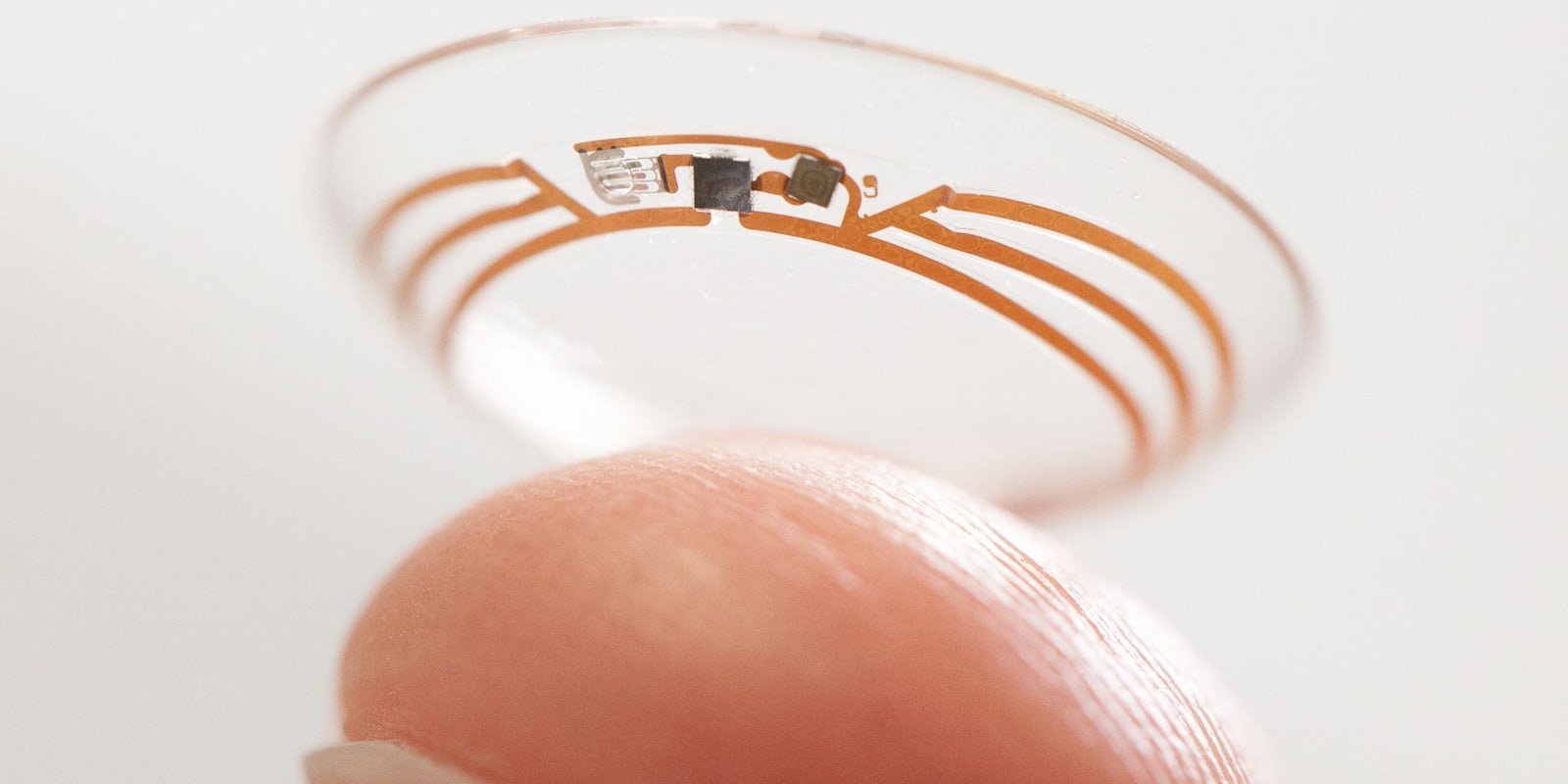For its next trick, Google wants to make reading glasses obsolete.
Earlier this week, the Silicon Valley tech giant announced a partnership with the Swiss multi-national pharmaceutical and medical device company Novartis around developing, manufacturing, and delivering technology designed to revolutionize the the contact lens.
“Our dream is to use the latest technology in the miniaturization of electronics to help improve the quality of life for millions of people,” said Google co-founder Sergey Brin in a statement announcing the partnership. Google is going to continue to develop the technology itself, while Novartis’s eyecare-focused subsidiary Alcon will manufacture and deliver the devices to doctors and patients.
Google first announced its efforts to build a better contact lens early this year. The project is part of the Google[x] project, where the company develops what it calls ?moon shots” that aren’t directly related to its primary business of selling web ads or creating new platforms for those ads. In addition to the smart lens, Google[x] was also the birthing place of Glass, the self-driving car, and Project Loon—an effort to expand global online accessibility by attaching Internet access points to an expansive network of balloons floating through the stratosphere.
When the smart lens was first made public, much of the focus was on the ability of sensors on the lenses to track the levels of glucose in the wearer’s eye fluid and then transmit that data to a nearby mobile device. For people with diabetes, for whom keeping a constant watch on their glucose levels can be a life-or-death issue, finding a way to monitor this data without having to constantly prick themselves with standard blood sugar monitors could be a huge improvement in the way they manage their disease.
However, along with the recent announcement of Google’s collaboration with Novartis, the company also talked about a second use for the product: an autofocuing contact lens.
?Most people, when they get to be about 40 and older, it becomes necessary for them to become readers. This is often the case for people who already have corrective lenses for other vision problems,” explained Novartis spokesperson Elizabeth Power. ?There are people who have to wear contact lenses for other vision issues and they still have to use readers. When you get older, they often get presbyopia, which is when the muscles that support your eye…don’t contract properly. They need to contract in order to let you look at things that are closer or further away from you.”
Power noted that the sensors in the smart lens technology are able to analyze the muscle contractions around the eye and use that information to make instantaneous adjustments. The resulting effect would be something akin to an auto-focusing lens on a camera—automatically detecting what the user is attempting to look at and then working to make that thing as clear as possible.
It seems likely that at least the autofocusing lens would function like a standard contact lens that sits atop the eye; however, it’s still early in the development process of all applications of the smart lens technology, and there’s a chance that intraocular lenses may be necessary to have the intended effect. Intraocular lenses are like traditional contact lenses, except they are surgically inserted into the eye itself, and are most commonly used to help with patients’ vision following cataract surgery. Power said that the decision about whether the lenses will be contact or intraocular is still pretty far down the line.
Novartis CEO Joe Jimenez told the Wall Street Journal that he hopes to have a smart lens prototype ready by 2015 and added to the Financial Times that he hopes to see a commercial product ready within five years.
Photo via Google/Novartis


